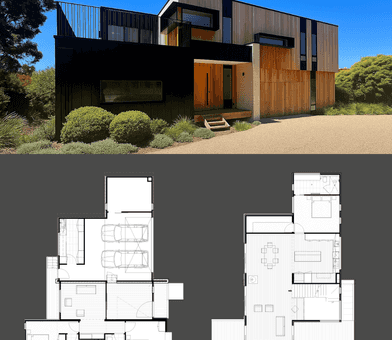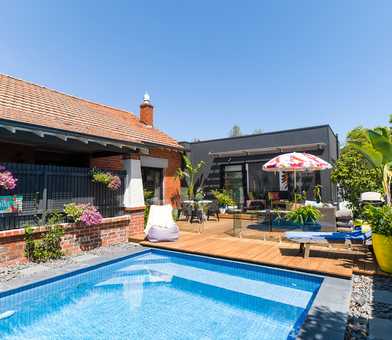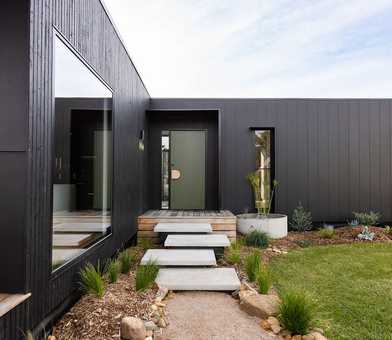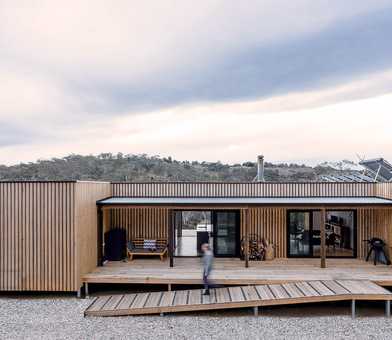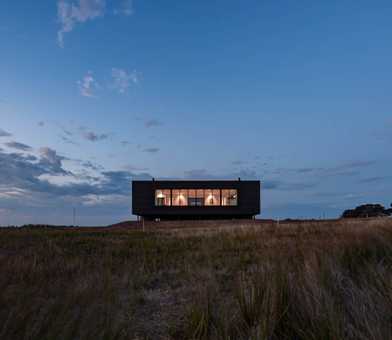Modular building, prefabricated home design and kit homes: what are the differences, the pros and cons and which one is best for you?
When it comes to building your new home, you’ll be faced with a myriad of different choices – some of the exciting ones include floor plans and colour schemes. But an important decision that needs to be made right at the start of your journey is the type of new home you’d like to build and the associated construction process. Think: traditional construction or prefab construction – which includes modular and kit homes, too.
While the process of traditional building is relatively well-known – all the action typically happens on-site with your home being built from the ground up – there is often little known about the scope and process of prefab construction.
You might be wondering what the differences are between prefab, modular, and traditionally built homes, or be curious about the pros and cons and costs associated with each build type.
You’ve got questions and we’re here to answer them.
In this article, we’ll explore the definitions and differences of modular, prefab, and kit homes and answer common questions such as:
- How much do modular homes cost to build?
- How much does it cost to transport a modular home?
- How long does it take to build a modular home?
- Are modular homes a good investment?
- How much do prefab homes cost?
- What are the benefits of prefab homes?
- How much do kit homes cost?
- Are kit homes cheaper than traditional home building?
- Are kit homes any good?
Prefabricated home versus traditional construction
In the traditional residential construction process, houses are built on-site from foundations to finishes and fittings. Within the traditional construction industry, there are many different types of builders from volume builds to custom homes – all of which are often referred to as ‘stick-built homes’ thanks to the frames that make up the structures.
Prefab construction methods offer an alternative to traditional residential construction where homes are built off-site in panels or modules which are then transported to the site to be put together and connected to services.
So outside of the construction methods, what are the differences between prefab and traditional construction? Generally, you can expect a prefab home to be constructed in less time and generate less waste in the construction process than the equivalent home design built by traditional construction methods.

Pros and cons of prefab homes construction
Manufactured home construction isn’t new. History has shown prefabricated construction methods recorded as early 43 AD –even the Eiffel Tower was built by prefab construction methods.
However, it’s only in recent years that the industry has experienced a surge in popularity thanks to the streamlined construction processes with some substantial efficiency gains and environmental benefits.
So what exactly is a prefab home? And what are the benefits and costs associated with the prefab construction process?
What is a prefab home?
Prefab homes refers to homes that are built by the prefab construction process – which are built off-site in panels, components or modules for assembly and connection to services on-site. Because the term ‘prefab homes’ refers to the type of construction, there’s not one single style of prefab home. In fact, modular and kit homes are considered prefab homes.
Pros of prefab home construction
- Faster construction: Because the components of prefab homes are produced in a factory setting, the construction process can often be faster than traditional site-built homes.
- Greater quality control: Factory-produced components are typically subject to greater quality control measures than those produced on a construction site, which can lead to a higher level of overall quality in the finished home.
- Cost-effective: Prefab homes can be more cost-effective than traditional site-built homes, especially when it comes to materials and labour costs.
- Energy-efficient: Many prefab homes are designed with energy efficiency in mind, which can lead to lower energy bills and a smaller carbon footprint.
Cons of prefab home construction
- Limited design options: Prefab homes may have fewer design options than traditional site-built homes, as the components are produced in a factory setting and cannot be customised to the same extent. Ecoliv has 30+ modular design floorplans to choose from when it comes to your dream home.
- Transportation challenges: Prefab homes may be more challenging to transport due to their size and weight, which can increase the overall cost of the project. Ecoliv deliver modular houses anywhere in Australia.
- Limited customisation: While prefab homes can be customized to some extent, they may not offer the same level of customization as traditional site-built homes. Ecoliv offers custom home options to get around this so you can build your dream home the way you like it.
- Limited availability: Prefab homes may not be available in all areas, and it may be more challenging to find land to build on in certain locations.
How much do prefab homes cost?
As the styles of prefab homes can vary, so do the costs associated with building the home. According to data from HiPages, a basic prefab home (think: kit home) typically costs between $2500 to $3000 per square metre with the cost increasing for more high quality homes with premium cladding, luxurious interior finishes and additional features. It’s worth chatting to your prefab home supplier as there may also be additional costs associated with surveying and preparing the site, town planning and permits, construction and services connections.
Thanks to the construction process occurring off-site in one location, there are significant time savings in the prefab process that just aren’t possible in the traditional construction process. This includes tradespeople attending one site – rather than spending time driving around to multiple sites – materials being delivered in bulk to one site, and in some cases protection from the weather (which results in fewer days where tradies are rained off or heated off).
These time savings translate to cost savings which make the prefab construction process both quicker and more cost-effective than traditional construction methods.
That said, the type of prefab home you choose to build will influence the build timeline and the associated investment – we’ll cover that in more detail in the coming sections.
Learn about the 3 steps to get a loan for a prefab modular home in this article.
What are the benefits of prefab homes?
Time and cost savings aren’t the only benefits of prefab homes. As there is typically less material wastage associated with prefab construction, this building method is also better for the environment.
Prefab homes are also a great option for those seeking to build a new home in a remote or rural area – where there are often fewer tradespeople and associated businesses (such as materials and hardware stores). Like this Ecoliv home in Jindabyne – a remote location with little access to skilled construction people or services.
Find out more about how prefab homes work on our blog.
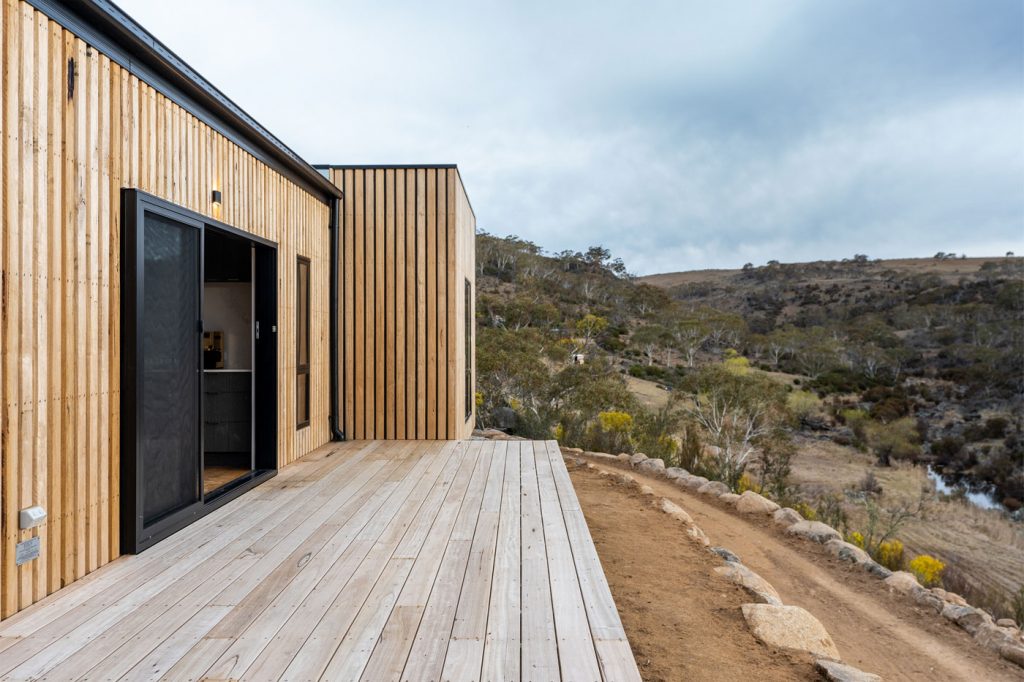
Kit homes
While kit homes fall into the prefab homes family, in that their trusses and components are constructed off-site, they’re often delivered to the site in pieces for assembly on-site by the owner or a builder engaged by the owner. In this section, we’ll explore what exactly makes a kit home and the associated pros and cons of this type of home.
What is a kit home?
As the name suggests, the core components of kit homes are built off-site, often in a prefab construction facility, and delivered to the site in a ‘kit’ for assembly and connection to services.
What are the different types of kit homes?
While kit homes can include family-sized residential homes, they’re often used to create ancillary dwellings such as granny flats and studios situated on the same land as the main property – usually a family home.
When it comes to building a kit home, there are generally three different stages of build that can be selected: lock-up stage home kits, lining stage home kits and final stage home kits.
- Lock-up refers to the home being built to a stage where the front door can be locked (meaning the roof, walls, windows, and doors are on – but the rest is incomplete).
- At the lining stage, everything from the lock-up stage is completed with the addition of interior walls, ceilings and doors and cabinetry.
- And the final stage is where the home is essentially complete (think: kitchens and bathrooms are functional) and ready to move in.
How much do kit homes cost?
As with prefab construction, on the whole, kit homes offer significant time and cost savings thanks to the nature of their design and building process. However, these efficiencies come from the cookie-cutter nature of the building design and construction process. Put simply, if you decide to build a kit home you’ll be choosing from a set range of designs with little ability to make adjustments.
The cost of kit homes can vary greatly depending on the type of kit home, the size of the home and the stage of build to which the kit is completed – lock up, lining, and final. For example, an 85 m2, two bedroom, one bathroom kit home may cost around $114,000 – around $1,300 per square metre – on par with the average cost of a home which is $1,393.55 per square metre according to the Australian Bureau of Statistics (ABS).
Are kit homes cheaper than traditional home buildings?
While there are certainly some cheap kit homes out there, on average the costs are similar to building a conventional home. In fact, according to data from Build Search the average cost to build a basic new home in Melbourne is around $1,390 per square metre however this soars to nearly $3,000 per square metre for homes with more premium finishes.
What are the benefits of kit homes?
If you’ve been Googling ‘are kit homes any good?’, you might have come across a plethora of resources (and opinions) relating to the features and benefits. Ultimately, what makes a home ‘good’ depends on the needs of the occupants.
In the case of kit homes, if it’s speed and affordability there are certainly kit homes that will meet those criteria. However, the management of the build process will be almost entirely your responsibility as once the kit is delivered, it’s over to you to organise assembly and connection to services.
Modular homes
Like kit homes, modular homes are homes built by the prefab construction process. However, there is one major difference: modular homes are built to completion in volumetric modules which are then transported to the site to be connected to services – unlike kit homes, which are transported in pieces (as a kit) and assembled on-site. In this section, we’ll explain what defines a modular home along with its advantages, answering top questions and considerations.
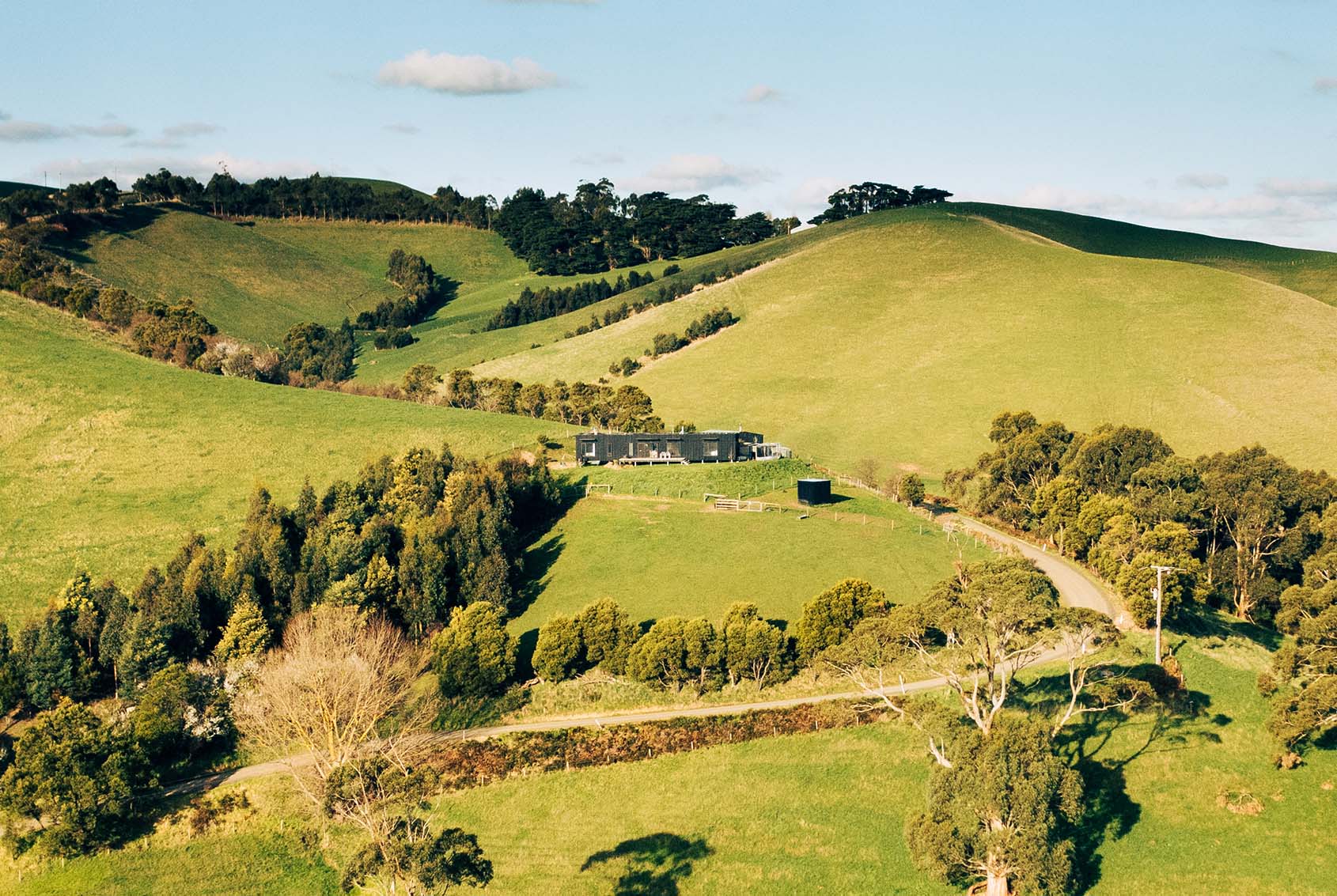
What is a modular home?
A modular home is made up of sections (also known as volumetric modules) that are constructed off-site in a prefab construction facility. At Ecoliv, our modular homes are built in our facility located at The Gurdies on Victoria’s Bass Coast.
Each module is designed to either make up an entire small dwelling (like our EcoHut one-bedroom cabins) or combine with other modules to create a larger home (like our EcoLiving and EcoGeneration homes).
Ecoliv modular homes are made up of volumetric modules which are precision-designed to fit on the back of a truck according to weight requirements and/or for being craned onto site.
How long does it take to build a modular home?
As a general rule, a new home built by traditional construction methods typically takes 12–16 months to build with the exception of homes built from pre-designed plans taking around six months.
While the build timeline for modular homes can vary depending on the size and complexity of the design, as modular homes are built in the prefab construction method, they are generally much more efficient to build than conventionally constructed homes.
At Ecoliv, the average build timeline for our modular homes is 20 weeks from the commencement of the construction process and installation occurs on site over just 1 day.
What is the cost of a modular home?
When it comes to the cost of modular homes, a few things need to be considered – particularly if you’re choosing a sustainable modular home.
The slope and orientation of the site impact the design of the home and the level of complexity of the construction process which will have a bearing on the cost of the modular home. Equally important is considering the distance that the modular home will be transported as this influences the cost as well. While these factors influence kit homes as well, it’s especially important to consider when planning a modular home – which is built to specification entirely offsite.
Then there is the construction cost which is going to be influenced by the square meterage of the home along with the build quality, material selection, finishes and any customisations. As a guide, Ecoliv has a selection of pre-designed modular home floor plans to choose from ranging from studios to four-bedroom family homes. Our EcoHut range (which comprises one and two-bedroom configurations) starts at $228,000 and our luxurious and operationally carbon-neutral EcoGeneration range (which offers up to four bedrooms, two living areas and 2.5 bathrooms) from $656,000.
What are the benefits of modular homes?
Fast build and installation turnaround aren’t the only advantages of modular home building.
The efficiency gains from building in a controlled facility include: twinning production where similar structures are built at the same time, tools and materials are close at hand and the build site can be prepared simultaneously while the home is constructed off-site.
There are also numerous environmental benefits of modular construction. Improved building quality and more air tight structure are achieved by building the home in a controlled construction environment. Modular construction also vastly minimises the amount of on-site waste and land disturbance.
How much does it cost to transport a modular home?
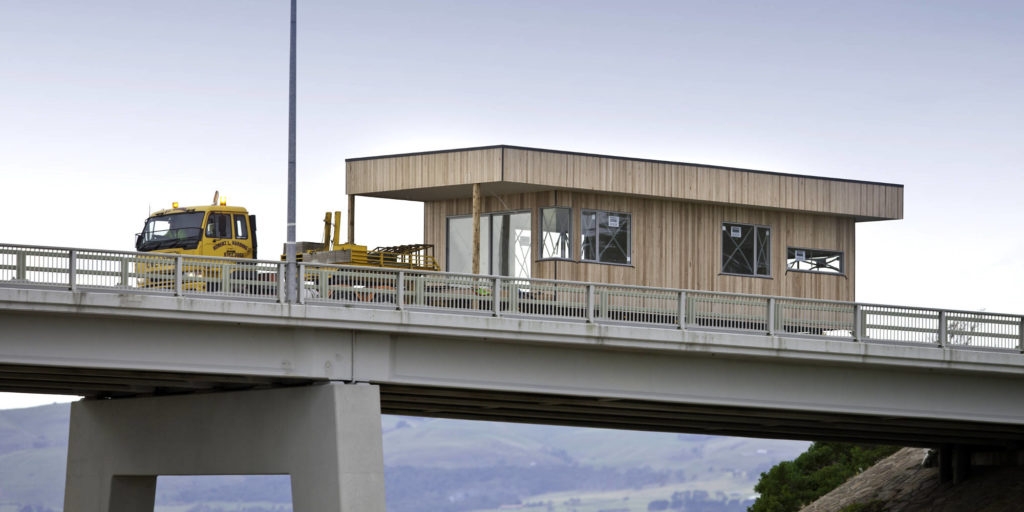
One of the key features (and benefits) of modular homes is the ability to transport them from the construction facility to your site. While the cost of transporting your modular home can vary depending on the distance of travel required and the size of the modules, it’s usually around $1,000 per truck per hour.
Where the site is in a remote or rural location, there may also be additional costs to accommodate trades for the duration of the delivery. And for urban settings, there are sometimes costs associated with local council and transport authorities to close roads and allow for cranes to operate over occupied dwellings.
Are modular homes a good investment?
While we might be a tad biased, we believe Ecoliv modular homes are a wise investment. And not just financially. All our homes are designed to maximise the comfort and wellbeing of occupants with passive solar design, cross-flow ventilation and low VOC paints and cabinetry contributing to the health of the home.
With a 7 star energy rating (compared to the 6 star industry standard) and a sustainable design and building process, solar energy and a 10,000 litre tank included, Ecoliv homes aren’t just a good investment in your health and wellbeing, they’re an investment in the future of the natural environment too.
Plus with the associated operational cost savings that can be made by reducing reliance on mains gas, electricity and water, there are some major environmental (and economic) perks too.
Modular home building made easy with Ecoliv
If you liked the sound of the faster build time frames, improved environmental outcomes, and healthier living for occupants that come with Ecoliv sustainable modular homes, then we’d love to help you find the right design for you – or work with you to bring your custom home vision to life. Explore our pre-designed modular homes or contact us today to learn more about building your next home with Ecoliv.

